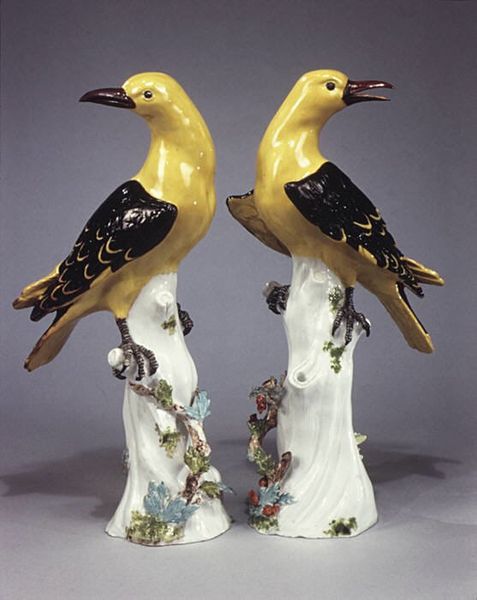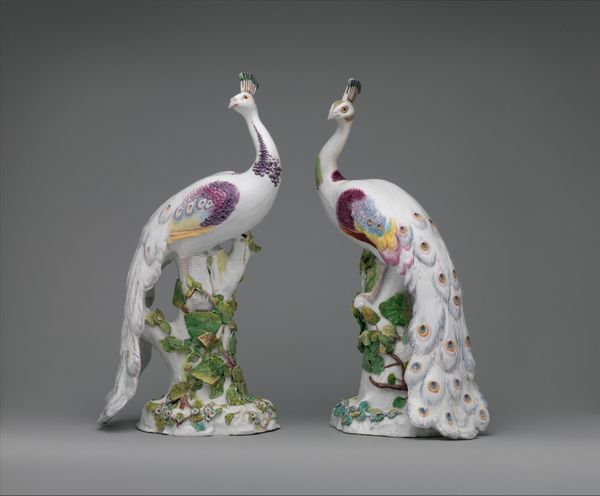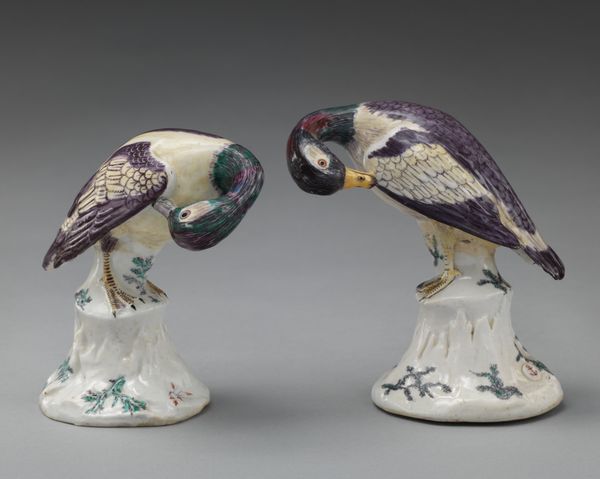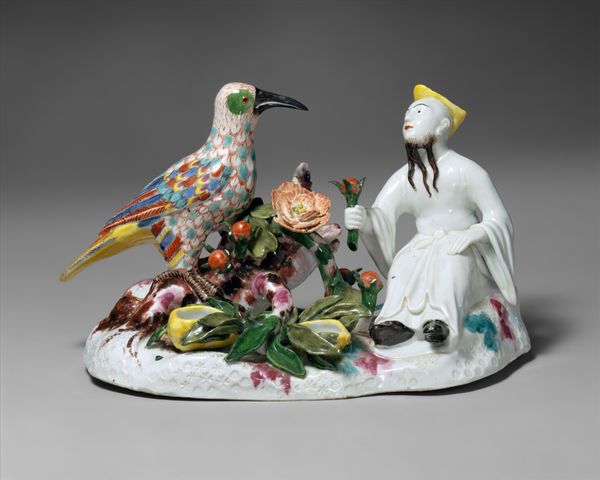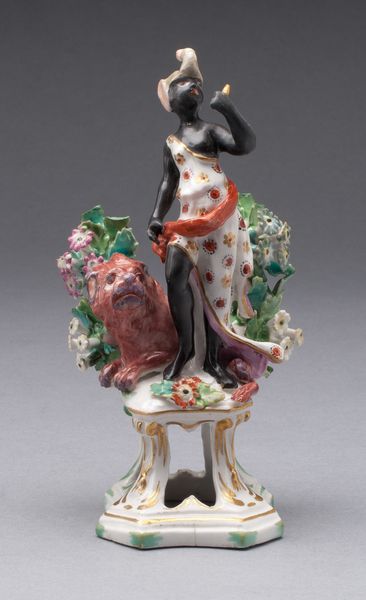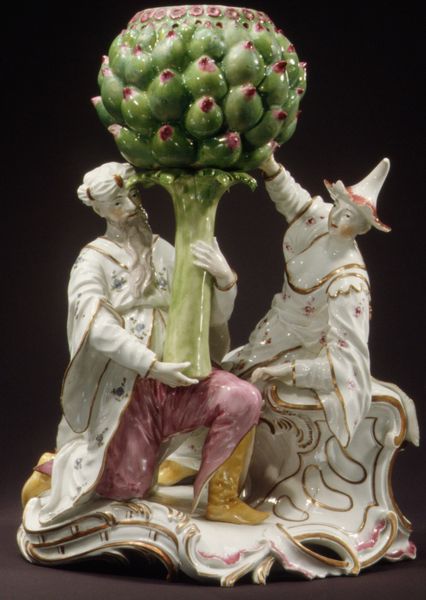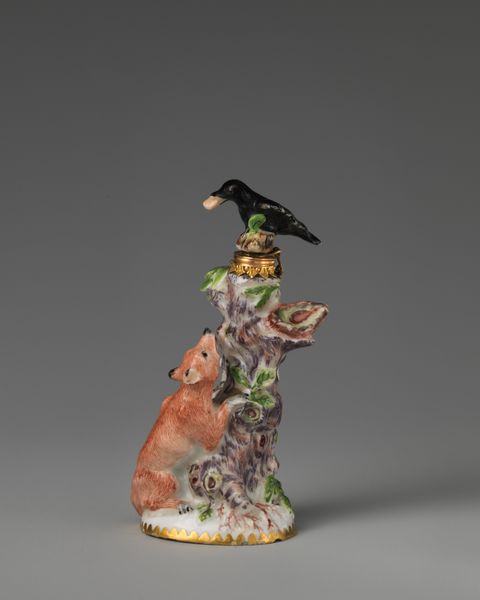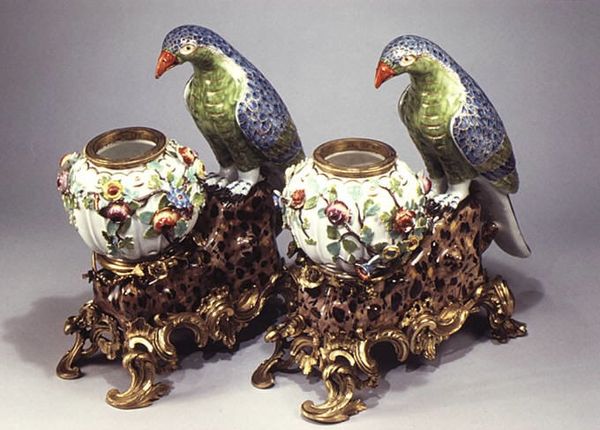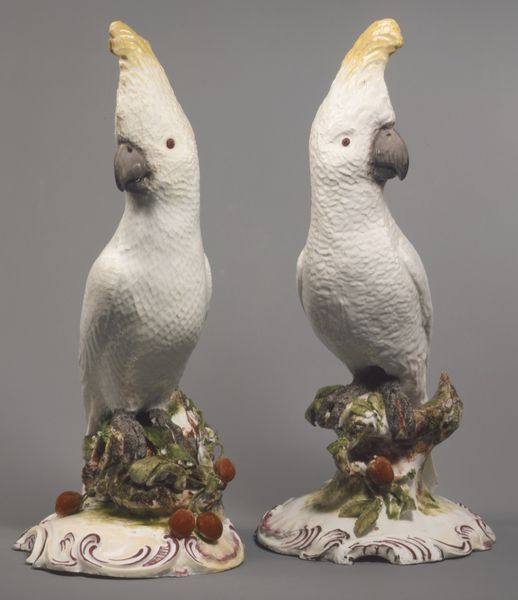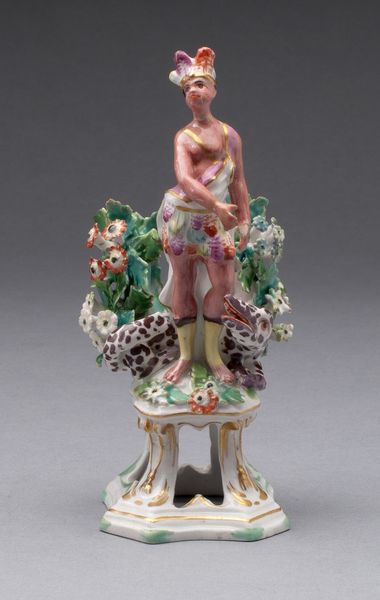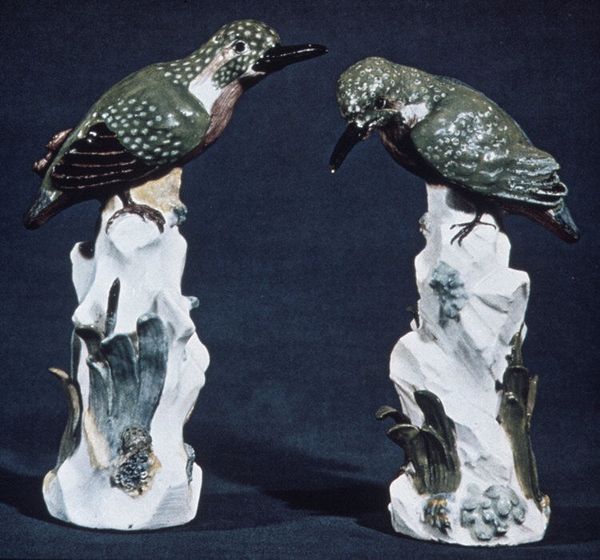
ceramic, porcelain, sculpture
#
sculpture
#
ceramic
#
bird
#
porcelain
#
figuration
#
sculpture
#
decorative-art
#
rococo
Dimensions: Height: 11 in. (27.9 cm)
Copyright: Public Domain
Editor: Here we have “Quetzal (one of a pair)”, a porcelain sculpture from the Meissen Manufactory in 1733. The Rococo style really comes through in these elegant bird figures perched on faux tree stumps, don’t you think? What do you see in terms of materiality and social context? Curator: The immediate thing that strikes me is the extraordinary amount of labor that went into producing these objects. In 1733, porcelain was like gold—a luxury material accessible only to the elite. The very act of creating these birds, mimicking nature with such precious material, speaks to a deep social divide. Think of the mining, the transporting of raw materials, the specialized skills required for shaping, firing, and painting… it’s a monument to aristocratic consumption. Editor: So, the porcelain itself is as significant as the subject matter? Curator: Absolutely! The Quetzal bird, native to Central America, adds another layer. Why choose this exotic creature? Because it signified rarity and access to global trade routes. Meissen wasn't just crafting pretty birds; they were crafting status symbols, broadcasting wealth and influence through their material choices and skillful techniques. How does understanding the labour change your impression? Editor: It really does transform them. It's easy to see them as just decorative art, but knowing the resources poured into creating them makes them almost… oppressive? It forces me to think about who *didn't* have access to such beauty, and the human cost of creating such extravagance. Curator: Precisely! And that's the beauty of examining art through a materialist lens – we unveil the complex economic and social relationships embedded within these seemingly innocuous objects. It highlights that Rococo excess isn’t simply about frills, but also about the power structures of its time. Editor: That's a perspective I hadn’t considered before. It's amazing how knowing the story behind the materials can reshape your entire understanding of a work. Curator: Indeed! Hopefully, by contemplating material conditions, we understand better that objects tell stories, but those stories aren’t always what they seem at first glance.
Comments
No comments
Be the first to comment and join the conversation on the ultimate creative platform.

